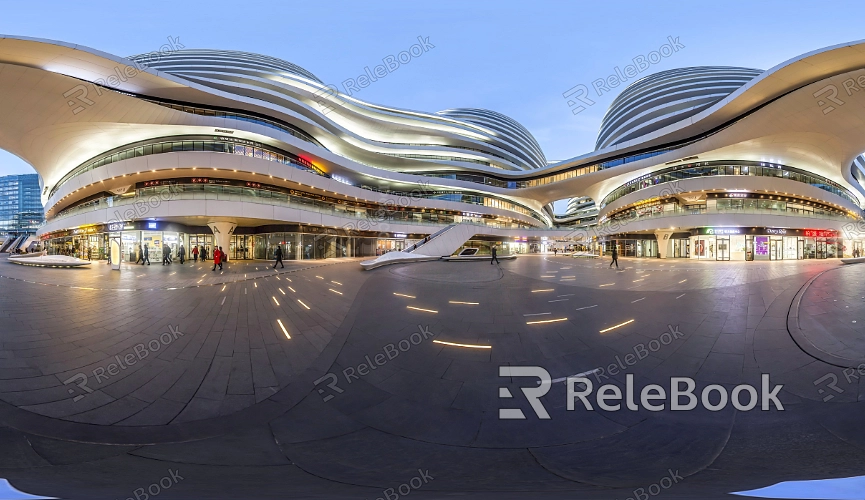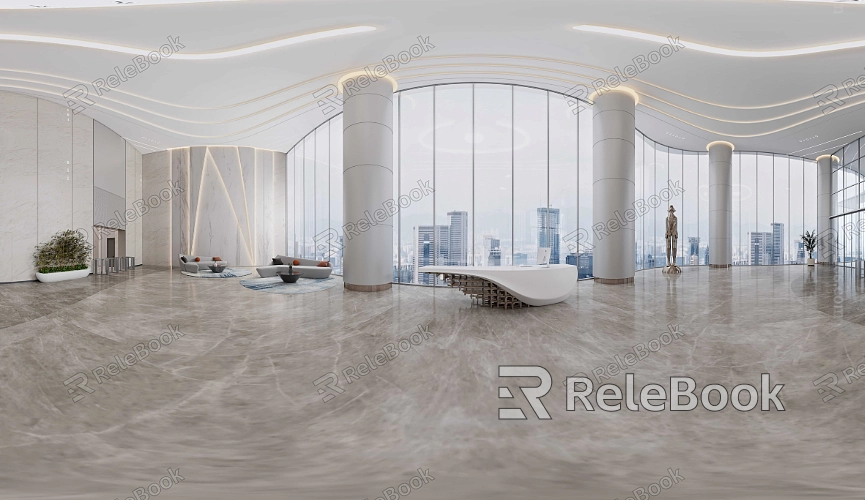Is an HDR Image a JPG
HDR images are increasingly used in popular 3D design software such as 3ds Max, Blender, and Maya for lighting and environment mapping to achieve realistic lighting effects and rich details. However, during the design process, a common question arises: "Is an HDR image a JPG?" This question stems from confusion about the characteristics of different image formats and their specific applications in the design workflow. In this article, we'll explore the differences between HDR images and JPG format and explain why HDR images typically aren’t stored as JPGs.

1. Basic Differences Between HDR Images and JPG Format
Characteristics of JPG Format: JPG (or JPEG) is a widely used image format known for its impressive compression efficiency. It’s commonly used for storing photographs and images, making it ideal for saving high-quality images with limited storage space. However, JPG is an 8-bit format, meaning each color channel can store a maximum of 256 levels of color, resulting in around 16.7 million colors in total. While this is sufficient for standard images, it falls short for HDR images.
Characteristics of HDR Images: HDR images are usually in a 32-bit floating-point format, allowing them to store a much broader range of color and brightness information. This means they can capture and display far more lighting details than JPG images, especially in highlights and shadows. Therefore, HDR images are better suited for 3D rendering scenarios where accurate lighting and material representation are crucial.
2. Why HDR Images Aren’t Stored as JPGs
Color Depth Limitations: The 8-bit color depth of JPGs cannot adequately represent the high dynamic range required by HDR images. Since HDR images involve a wide range of brightness and color, JPG compression would lead to the loss of color information, making the image unable to achieve the desired brightness and contrast that HDR offers.
Differences in Compression Methods: JPG uses lossy compression, which, although it reduces file size, also results in the loss of some image details. HDR images usually need to retain all lighting information, so they are often stored in lossless or uncompressed formats like HDR, EXR, or TIFF, which preserve the high dynamic range details of the image.

3. Common HDR Image Formats
HDR Format: HDR (Radiance HDR) is a format specifically designed for storing high dynamic range images and is widely used in 3D rendering and lighting design. This format can preserve extremely precise brightness information, making it an ideal choice for lighting maps.
EXR Format: EXR, developed by Industrial Light & Magic (ILM), is a high dynamic range image format that offers great flexibility and storage capacity. It supports multi-layer images, allowing designers to store multiple image channels in a single file, such as color, depth, and lighting information.
TIFF Format: While TIFF is commonly considered a standard image format, it also supports high dynamic range. TIFF can store images in a lossless manner while maintaining high color depth, making it a viable option for HDR images in some cases.
4. How to Use HDR Images in 3D Software
Using HDR Images in Blender: In Blender, HDR images are typically used for environment mapping to create realistic panoramic lighting effects. Designers can load HDR images through the “World” settings in the “Environment Texture” option, simulating the complexity of natural lighting.
Using HDR Images in 3ds Max: 3ds Max allows designers to apply HDR images to environmental lighting or light sources in a scene. These images can provide realistic reflections and refractions during rendering, significantly enhancing the visual realism of the scene.
Using HDR Images in Maya: Maya also supports HDR images extensively, especially with the Arnold renderer. By adding HDR images to a scene, designers can achieve more accurate lighting effects, particularly in complex material and shadow interactions.
5. Why Choose HDR Images Over JPG Format
Improved Rendering Quality: HDR images capture more lighting and color information than JPGs, delivering a higher level of realism in 3D renders. For projects requiring realistic lighting effects, such as architectural visualization or movie effects, HDR images are indispensable.
Flexible Post-Processing: Since HDR images retain a rich dynamic range of information, designers can adjust exposure, brightness, and contrast more flexibly during post-processing without significantly degrading image quality. This flexibility is something JPG format cannot provide.
By understanding the differences between HDR images and JPG format, 3D designers can make better choices when selecting the appropriate image format for specific projects. While JPG is common in everyday use, it doesn’t meet the high color depth and lighting information required by HDR images. If you’re looking for high-quality HDR image resources, 3D textures, or models, Relebook is a platform worth exploring. Relebook offers resources that can be directly imported into your design software, helping you elevate the quality and impact of your work effortlessly.

